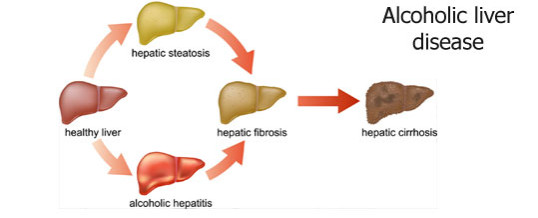
(a) fatty liver, where excess fat deposits in the liver;
(b) Alcohol-related hepatitis, in which the liver cells get damaged (inflamed) and
(c) Alcohol-related cirrhosis, in which normal liver tissue is replaced by nonliving (or fibrous) scar tissue. Cirrhosis of liver is irreversible medical condition
Obesity or poor nutritional status (malnutrition), certain genetic factors and underlying liver disease (like viral hepatitis) can contribute or exacerbate alcoholic liver disease.
Fields marked with an * are required
09:30 AM to 11:00 AM
04:30 PM to 06:00 PM
For Appointment: 6358873803
11:30 AM - 1:30 PM
4:30 PM - 6:30 PM
7:00 PM - 8:30 PM
Closed
For Appointment: 90168 92841